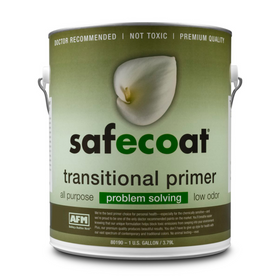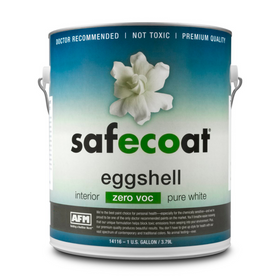
How to Decorate Walls Without Paint
Last Updated: Feb 9, 2025Nothing revitalizes and refreshes a home like a new coat of paint. Whether you are redoing your kitchen or adding a new hue to your window shutters, a fresh coat of paint can undoubtedly transform the way your home looks and feels. Besides revitalizing your home, interior and exterior paints can also play an essential role in preserving certain home materials and protecting them from the outside and natural elements. In some cases, paint can help ameliorate irritants like mold and mildew built up in homes located in humid environments. That new shade of blue in your bedroom, however, often comes with several disadvantages, including unpleasant smells that can give you headaches as it dries out.
Today, fortunately, there are several healthier paint options on the market, including paints with low or zero Volatile Organic Compounds (VOCs). Low VOC paints must have less than 50 grams per liter of VOCs, while zero VOC paints must be certified to have less than 5 grams per liter. Unfortunately, many paint products labeled as low or zero VOC do not include the VOCs added to the paint base by the tints and colorants added later in the process, often at the store where you purchase the paint. While paint products continue to evolve, there are several more sustainable ways to dress up your walls without relying exclusively on a trip to the paint store.
The Environmental Impact of Paint
As mentioned above, paint plays a significant role in negatively affecting the air quality inside your house. The Environmental Protection Agency's (EPA) emission profiles for California's state find that paint's surface coatings are responsible for 9 percent of all VOC emissions in the state. The organic solvents in VOC emissions from paint have been linked to several potentially serious health issues, including:
- Eye, nose, and throat irritation
- Headaches, loss of coordination, and nausea
- Damage to the liver, kidney, and central nervous system
- Cancer in animals, some are suspected or known to cause cancer in humans.
The paint industry's VOC emissions also lead to petrochemical smog and greenhouse gasses contributing to climate change. Oil-based paints often rely on mineral turpentine as a thinner, containing up to 20 percent benzene—a dangerous and confirmed cancer-causing agent. The tints used in standard household paints also present a health and environmental danger. Metal pigments commonly used in paint, such as cadmium and titanium dioxide, have substantial ecological impacts when not correctly disposed of and released into local ecosystems and watersheds.
Whether you are looking to do a significant renovation or want to add a bit of spice to a neglected corner room of your house, you can avoid the harmful effects of paint by opting for one of the alternative wall adornment ideas detailed below.
Recycled/Upcycled Options for your Walls
Instead of throwing out a collection of supposed "junk" that you come across while cleaning out your attic, you might be able to come up with creative ways to recycle or "upcycle" used items for unique wall art.
Repurpose Old Books and Magazines
Rather than heading to the hardware store to purchase a new roll of wallpaper, consider looking through the stacks of old books and magazines that you might have lying around your home. Old textbooks, dictionaries, and National Geographic magazines are just a few of the possibilities of unused books or magazines that might hold a treasure chest of unique imagery to spice up your wall. Instead of randomly placing dozens of pictures, quotes, and pages with unique calligraphy, consider starting with a unifying theme for your recycled wallpaper. For example, cutting out dozens of attention-grabbing, black and white photographs can make for a beautiful way to revitalize your wall.
Table of Contents
- Natural Wall Coverings
- Some Creative Options
- Shelving, or Not…

Find a New Use for Old Fabrics
The chances are that you probably have trunk loads of old clothes, blankets, linens, and other textiles and fabrics lying around your house. Instead of simply throwing them away or letting them gather dust, consider combining the unique colors and textures of those old fabrics to create a stunning wall hanging.

A Family Photo Wall
While most homeowners have a few family photos framed and hung on walls throughout the home, why not consider dedicating a whole wall of your home as a dedication to those you most love? Rectangular frames can be designed to look like makeshift bricks, and a collection of family photos and mementos can be made into a centerpiece of any home.

Some Creative Options
The only real limitation for interior wall decorating is your imagination. Consider that white, boring drywall as a canvas waiting for your next masterpiece to emerge.
Washi Wall Tape
Washi wall tape is a type of Japanese tape like masking tape, but more sustainable and colorful. Washi tape was traditionally made from rice flour, though today, it can be made from bamboo, hemp, and wheat substrates. This relatively inexpensive and VOC-free tape comes in hundreds of colors, patterns, and widths, making it an ideal option to create beautiful interior designs throughout the walls of your house. What´s even better is that the Washi wall tape can be taken down in minutes without damaging your walls, which means you can allow your children to “decorate” the walls of their bedrooms without worrying about having to paint over their creations in the future. For some inspiration on how to decorate with Washi wall tape, check out these ideas.

Green Wall
You may know about green roofs, but did you know you can have a green wall? Rise’s headquarters in Fredericton, New Brunswick, boasts a beautiful green wall, delivering cleaner, fresher air to any interior space.

Shelving, or Not…
One of the best ways to reduce your household carbon footprint is to reduce the size of your home. Of course, the problem is that trying to fit all of your “stuff” into a 1,000 square foot home can be a challenge. Utilizing your wall space as a creative storage solution serves the double purpose of allowing you extra space for storing your possessions while also offering a unique and beautiful form of wall art. This tiny home in Alabama dedicates the entire back wall of the house to strategically placed shelving. Besides creating space for storing books, pictures, and other belongings, the shelving itself creates a one-of-a-kind wall décor.
For people collecting antiques or other odds-and-ends, walls are a great space to showcase your eccentricity. Key chains, beer caps from around the world, car license plates…the options are virtually inexhaustible when you let your imagination roam free. So if your home, or just a wall, needs a new look, remember that paint is not your only option.
Tobias Roberts
Tobias runs an agroecology farm and a natural building collective in the mountains of El Salvador. He specializes in earthen construction methods and uses permaculture design methods to integrate structures into the sustainability of the landscape.











